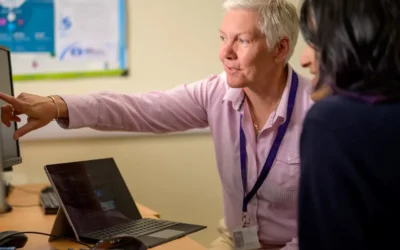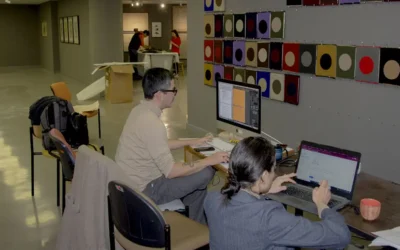How to Win Museum Grant Funding for “Boring” Projects

Rachael Cristine Woody
When I teach museum staff grant acquisition strategy, one of the first mental roadblocks to appear is the perception that all non-exhibit museum projects are “boring” and, therefore, un-fundable.
In most cases “boring” is a descriptor typically used to describe everyday needs, digital projects, brick and mortar repairs, and staff capacity. Sometimes it can be hard to win grant funding, but it’s not because the proposed project is boring. It’s usually because the grant writer failed to frame the proposal at its most competitive angle. There are, in fact, grant funding opportunities available for many non-exhibition museum projects—including “boring” catalog projects. The trick here is knowing how to present your proposed project in the most appealing way possible to the grant fund you’re applying for.
Check Museum Eligibility and Project Suitability
First, we need to make sure the grant opportunity we’re applying for is one that the museum is eligible for and is suitable for the project we have in mind. If the proposed project doesn’t meet both eligibility and suitability requirements, there’s no reason to go further with this particular funding opportunity.
Analyze the Grant Opportunity and Identify the Review Criteria
Any grant you apply for should (at a minimum) have an obvious funding mission. A majority of funders will further outline areas of interest, types of projects they do/do not fund, and examples of past awardees. Some grantors and all federal funds will publish the scoring rubric that will be used to evaluate the application. It’s fairly easy to check the funding mission and confirm that it’s an appropriate fund to apply to. Where the competitive edge comes in is how well you can frame your application to mirror the scoring rubric so that the reviewers have no choice but to score your application favorably.
Bake High-Score Elements into the Application Early
The most competitive application is one that meets and exceeds in all areas being evaluated by the reviewers. In order to ensure a high score, I recommend the following steps:
- Identify each criteria element and assign it to a section of the application where that criterion will be addressed.
- Copy and paste the criterion description into the application section where you intend to address it directly so that you can reference it while you create your application narrative.
- Use the exact same language from the grant rubric so that the grant reviewers are “flagged” by the language and understand you’re directly addressing one of the areas they are evaluating.
Framing is Everything
It’s possible to meet all of the grant fund criterion and still fall short of an award-winning proposal. The review process can still be subjective and grant reviewers can only do so much to adjust their biases and preferences to a neutral setting. With this in mind, I recommend spending time on how to frame the proposed work in the most attractive way possible. This can be done by framing the “boring” elements of your proposal in meaningful ways. Here’s an example:
“With this grant we will scan 100 glass lantern slides of shipwrecks on the Columbia River. We will then add these 100 items to our museum catalog.”
Or…
“This award will help us preserve 100 fragile artifacts that are more than 100-years-old and document one of the deadliest rivers in the world. We then plan to publish these images online via our digital collections portal where they will be free and open to the public.”
Do you see what I did there? In the first example the work was oversimplified, and while the language used wasn’t incorrect, it was pretty dull. We’re not *just* digitizing. We’re preserving history and we’re creating points of access to these historically important and terribly interesting materials. Yes, these will be added to the museum catalog. Yawn. But ultimately, you’re making them freely available online, and there’re some pretty wonderous things you can do with those materials once they’re digitized and online.
Conclusion
Museum grant writing is part science and part art. The application you create has to be of sound structure and meet certain benchmarks, but it also has to catch the reviewer’s attention and make it easy for them to become invested in the idea you’re presenting. That’s the art. Your application can be technically competitive, but the framework you give it and how you describe it is what will make the difference in this competition.
Resources to Help You Get Started
Do you need help getting started? We have a few resources to help you get into grants, or refresh your grant writing knowledge!
- Lucidea Grant Writing Webinars (recorded)
- Lucidea’s Grants Directory
- Lucidea’s Grants Workbook & Templates
- A Survivor’s Guide to Museum Grant Writing
- Rachael Cristine Consulting LLC, Grant Services
- Rachael Cristine Consulting LLC, Grant Writing YouTube Playlist
A List of Grant Writing Posts via Lucidea’s Think Clearly Blog:
- 8 Tips to a Bulletproof Grant Proposal
- How to Determine Museum Grant Eligibility: A Check List
- How to Determine Museum Grant Suitability: A Check List
- How to Find the Best Museum Grant Funding Opportunity
- How to Increase Museum Grant Success by Mastering the Lexicon
- Museum Grant Pitfalls—Know & Avoid Them

Rachael Cristine Woody
Expert Rachael Cristine Woody advises on museum strategies, collections management, and grant writing for a wide variety of clients. In addition to authoring several titles published by Lucidea Press, Ms. Woody is a regular contributor to the Think Clearly blog and a very popular webinar presenter. While you’re here, check out our market-leading museum collections management system, Argus, used daily by forward-thinking museum professionals.
Never miss another post. Subscribe today!
Similar Posts
How to Incorporate Interns in Museum CMS Projects: Data Cleanup and Refinement
A museum expert details how interns can be successfully included in museum CMS projects at the data cleanup and refinement stage.
How to Incorporate Interns in Museum CMS Projects: Data Creation
A museum expert details how interns can be successfully included in museum CMS projects at the data creation stage.
How to Incorporate Interns in Museum CMS Projects: Data Capture
A museum expert highlights how interns can be included in museum CMS projects at the data capture stage
How to Incorporate Interns in Museum CMS Projects
A museum expert highlights how interns can be included in museum CMS projects with three project ideas.
Hosting service
Enjoy all of the benefits of your Lucidea solution with secure, reliable, stress free hosting
Programs & incentives
No matter your size or budget, we’ve got you covered, today and tomorrow




Leave a Comment
Comments are reviewed and must adhere to our comments policy.
0 Comments